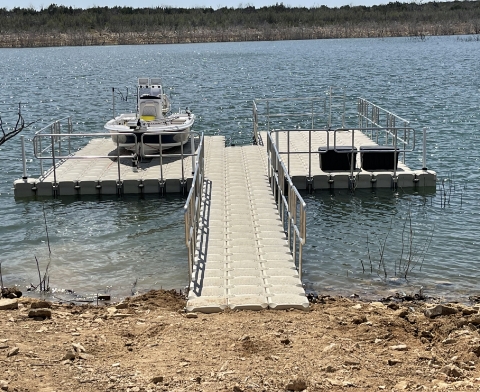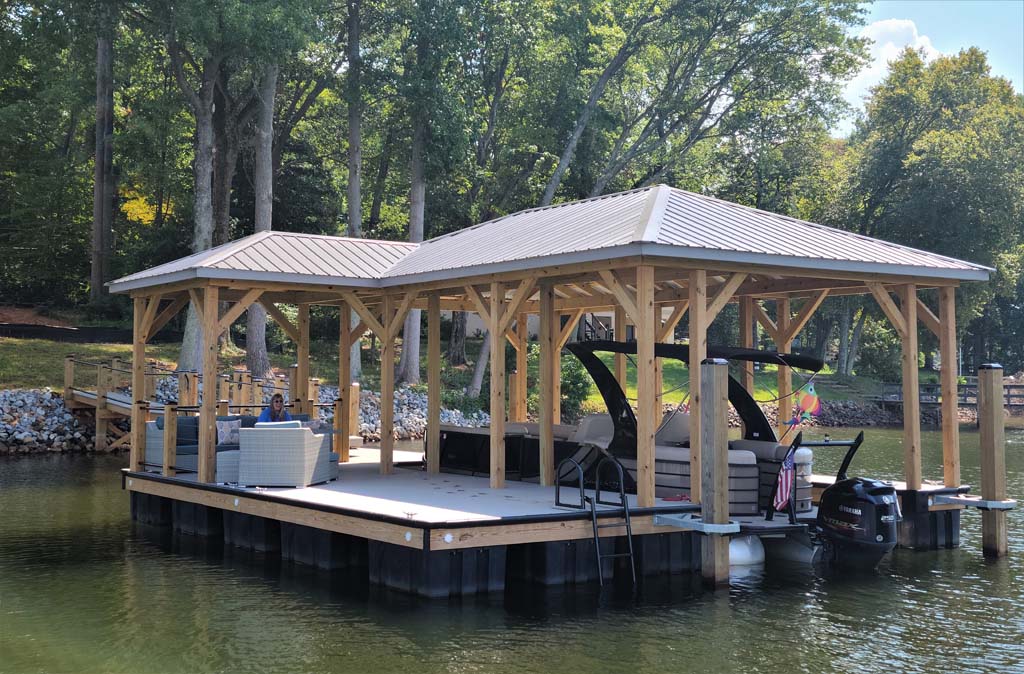Explore the Variety Of Floating Dock Providers Designed to Suit Every Boater's Requirements
Create the Perfect Docking Option With Floating Docks
Floating docks existing a versatile remedy for a variety of maritime demands, adjusting flawlessly to fluctuating water degrees and varied vessel types. Their modular nature permits fast installation and relocation, yet the choice of ideal materials and style features is critical for making sure both functionality and visual charm. As we check out the important aspects that add to the effectiveness of floating docks, a number of essential factors concerning security and upkeep will arise, elevating inquiries about exactly how to enhance your docking experience. The succeeding conversation will certainly brighten these essential considerations.

Advantages of Floating Docks
Floating docks offer numerous advantages that make them a suitable choice for various maritime applications. One of the primary benefits is their adaptability to altering water degrees. Unlike fixed docks, floating docks surge and fall with the trend, guaranteeing constant access for vessels. This attribute is particularly crucial in locations vulnerable to significant tidal fluctuations or seasonal water degree adjustments.
Furthermore, floating docks are normally less complicated and quicker to mount compared to standard set structures. Their modular design enables simple setting up and disassembly, promoting upkeep and relocation when required. This versatility is particularly advantageous for momentary applications or in settings where conditions may transform.
Floating docks additionally have a tendency to be much more eco-friendly, as they reduce interruption to the seabed and surrounding aquatic communities. Their resilient nature minimizes the danger of damages to aquatic life, promoting a healthier setting. These docks can be tailored to suit numerous vessel sizes, guaranteeing that they meet particular functional needs.
Eventually, the mix of versatility, convenience of installment, and environmental considerations makes floating docks a highly reliable option for a wide variety of maritime requirements.
Choosing the Right Products
Selecting the ideal products for floating docks is critical to ensure longevity, longevity, and stability. The choice of materials straight impacts the dock's efficiency in numerous ecological conditions, consisting of direct exposure to water, sunlight, and possible wear from marine web traffic.
Common products made use of for floating docks include light weight aluminum, wood, and high-density polyethylene (HDPE) Aluminum is lightweight, corrosion-resistant, and requires marginal upkeep, making it a superb selection for durability. Nevertheless, its first cost can be greater compared to various other products.
Timber, while visually enticing and giving a typical appearance, can be at risk to rot and pest damage if not appropriately treated. Using pressure-treated wood or naturally resilient types like cedar or redwood can alleviate these problems.
HDPE is a prominent selection because of its resistance to UV rays and chemicals, in addition to being ecologically friendly. floating docks. It is readily available and light-weight in numerous shades, enabling for personalization
Ultimately, the ideal product option will depend on specific needs, consisting of budget, preferred aesthetics, and ecological considerations. Mindful evaluation of these aspects will bring about a resistant and effective floating dock option.
Layout Considerations for Security
When developing floating docks, making sure security is an essential element that can dramatically impact their capability and safety. Security in floating official website dock layout is influenced by numerous elements, consisting of buoyancy, weight distribution, and the plan of components.
Weight distribution is critical; equally dispersing loads throughout the dock protects against turning and boosts stability. Bigger layouts can provide increased security, especially in harsh water conditions, while longer docks may require extra assistances to stop drooping.
One more key factor to consider is the ecological impact, including wave action and wind. Integrating features such as sidewalls or skirting can aid mitigate the results of ecological pressures, keeping stability in unfavorable problems. Ultimately, a combination of thoughtful design, product option, and understanding of ecological aspects will produce a floating dock that fulfills both security and safety and security requirements.
Installment Tips and Methods

Next, secure the necessary permits and comply with local guidelines, which might determine setup methods and environmental considerations. If needed, engage a certified service provider experienced in floating dock installations. Usage high-quality materials developed for marine settings to improve durability and long life.
When placing the dock, straighten it parallel to the shoreline to facilitate very easy accessibility. Guarantee that the anchoring system is robust, employing cinder block or helical supports to stabilize the dock versus wind and wave action. It's vital to represent seasonal water degree changes, including potential ice movement in chillier environments.
Throughout the installation, verify the dock's floatation and security prior to settling the anchoring. Consistently examine the installment for any kind of indications of wear or damage. By adhering to these ideas and techniques, you can achieve a safe and secure, practical, and aesthetically pleasing floating dock installment that satisfies your needs.
Maintenance and Treatment Guidelines
Caring and maintaining for floating docks is crucial to extending their life-span and ensuring secure use. Regular evaluations need to be carried out to recognize any kind of signs of wear, damage, or marine growth. Look for splits, loose installations, or tarnished locations on the dock's surface area, as these concerns can compromise architectural stability.
Cleansing is essential. Use a pressure washing machine to look at these guys get rid of algae, barnacles, and particles, which can gather with time. For stubborn growth, Related Site think about ecologically pleasant cleaning representatives that won't hurt marine life.
In addition, check the mooring lines and supports regularly to guarantee they are cost-free and safe and secure from deterioration. Change any type of torn or damaged lines immediately to preserve stability.
During extreme weather, such as tornados or freezing problems, take precautionary procedures. Secure the dock with added mooring lines and, if viable, eliminate any type of detachable components to prevent damages.
Final Thought
In verdict, the application of floating docks offers a effective and flexible docking option appropriate for numerous maritime applications. With appropriate installation and routine upkeep, floating docks can give reliable and reputable docking experiences for a large variety of vessels.
As we explore the crucial elements that contribute to the performance of floating docks, a number of vital factors relating to security and upkeep will certainly emerge, increasing concerns concerning how to optimize your docking experience. Unlike fixed docks, floating docks rise and autumn with the trend, guaranteeing regular accessibility for vessels.When making floating docks, guaranteeing security is an essential aspect that can dramatically affect their functionality and safety. Stability in floating dock layout is affected by different elements, consisting of buoyancy, weight distribution, and the arrangement of components. Ultimately, a mix of thoughtful design, material choice, and understanding of environmental elements will produce a floating dock that meets both stability and safety needs.